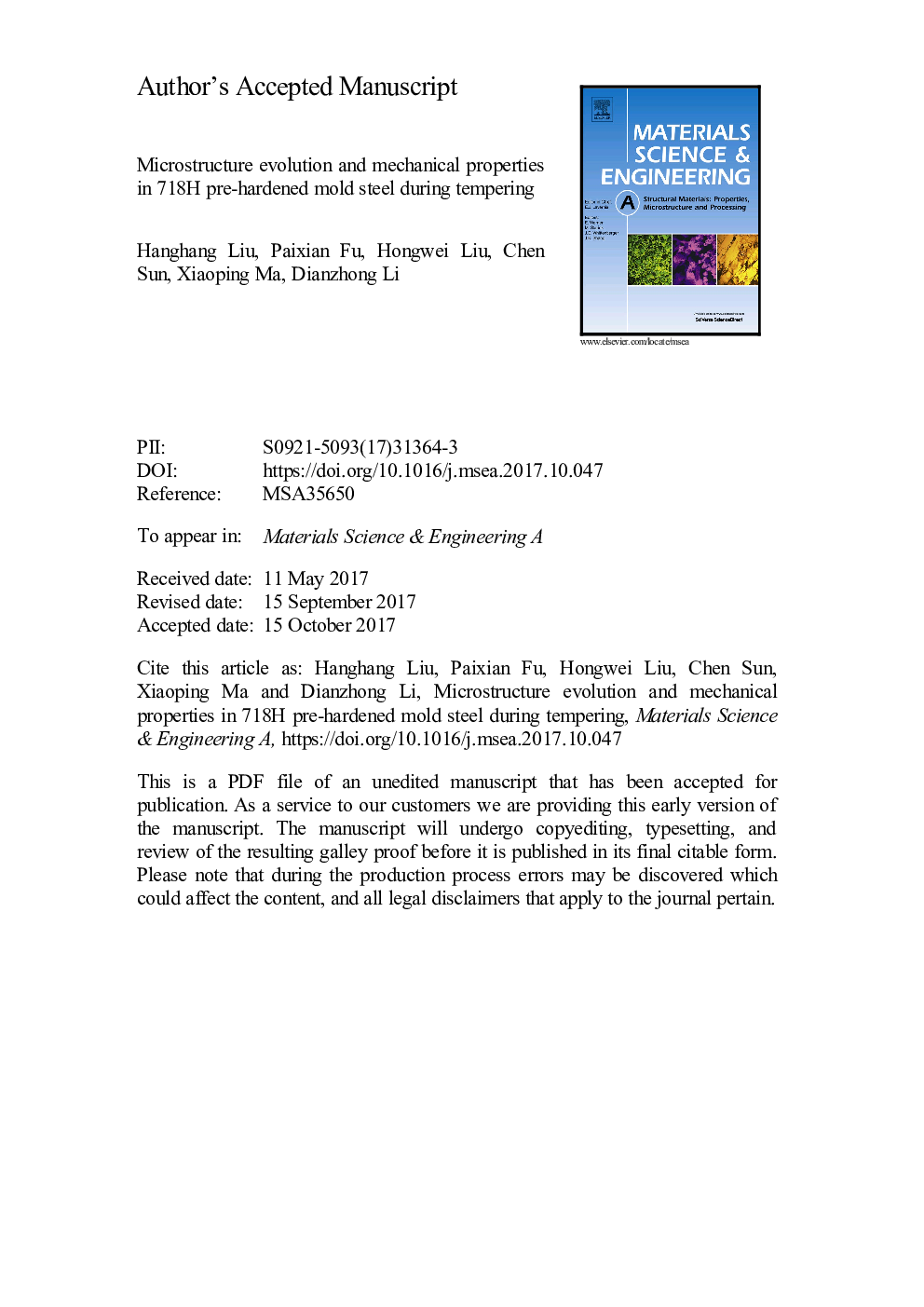| Article ID | Journal | Published Year | Pages | File Type |
|---|---|---|---|---|
| 7974607 | Materials Science and Engineering: A | 2018 | 32 Pages |
Abstract
The effects of tempering temperature on the microstructure and mechanical properties of 718H pre-hardened mold steel were investigated. After normalizing and quenching treatments, seven specimens were tempered at a temperature in the range of 500-650 °C for two hours. After heat treatments, the tempered microstructures were characterized by X-ray diffraction, scanning electron microscopy (SEM), and transmission electron microscopy. In addition, the phase identification and microchemistry of tempered carbides were performed by the physicochemical phase analysis method; then the precipitation sequence of tempered carbides was examined in detail by transmission electron microscopy and selected area electron diffraction patterns. Results indicate that the yield strength, ultimate tensile strength, and the hardness decrease; in contrast, impact energy increases with the increase in tempering temperature. The influence of tempering temperature on mechanical properties of 718H steel is attributed to the precipitation of tempered carbides, the recovery of the martensite lath, the dislocation density, and the grain structure. Furthermore, a more accurate study of the micromechanics was performed through the fatigue crack growth test. And a correlation between microstructure and mechanical properties was established by electron back-scattered diffraction. Finally, the fracture surface of the impact specimen was analyzed by SEM and energy-dispersive X-ray spectroscopy. According to the change in microstructure and mechanical properties as a function of tempering temperature, the optimal tempering temperature has been determined in the range of 530-560 °C.
Related Topics
Physical Sciences and Engineering
Materials Science
Materials Science (General)
Authors
Hanghang Liu, Paixian Fu, Hongwei Liu, Chen Sun, Xiaoping Ma, Dianzhong Li,
